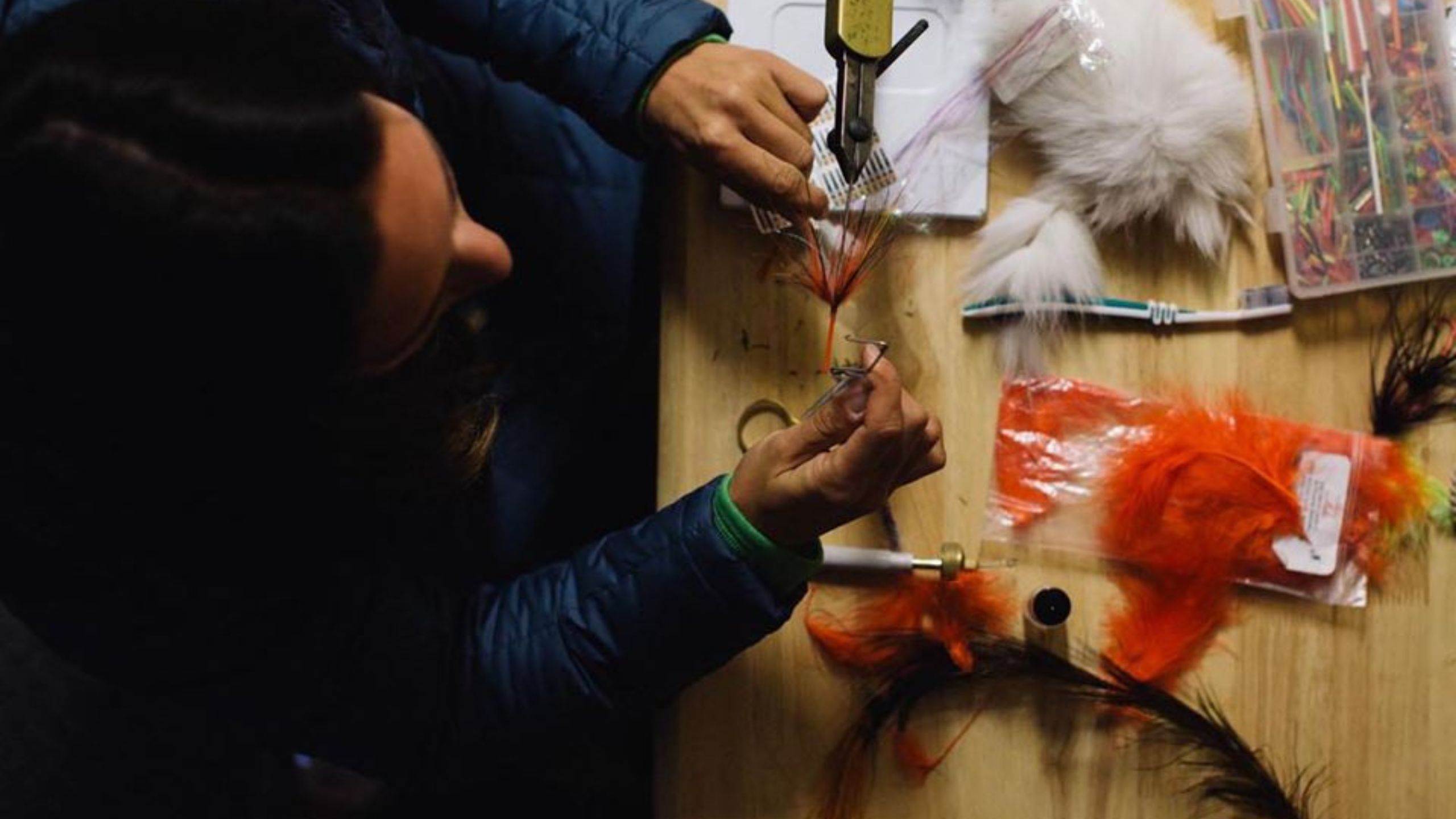The Fold Method
The fold-back method is a real lifesaver, especially when you’re working with fluffy, difficult-to-manage feathers like marabou. By folding both sides of the fibers back to meet at the stem, and with a little help from some spit or water, you’ll have a clean, exposed stem that’s easy to wrap forward. Remember, each wrap should be snug to ensure a neat finish.
Scissor Folding
Precision is the name of the game with scissor folding. It’s the go-to technique for stubborn feathers and those instances where you need a clean, exposed stem. A slight angle placement, a series of satisfying clicks, and voila, you’ve got a feather that’s ready to be wrapped, offering an aesthetic and manageable touch to your fly.
Peeling Method
Some feathers, like guinea and mallard, can get a little unruly when folded because they crisscross and refuse to lay smooth. Here’s where the peeling method shines. By peeling one side of the feather, you’re left with a neat, manageable piece that wraps snugly, giving your fly that professional touch. This technique is a game-changer, ensuring each wrap is both aesthetic and functional, creating a perfect presentation every time.
Dealing with “Fluff”
Fluff can be a challenge, but not when you know some tricks. With just a bit of water or spit, even the fluffiest of feathers can be tamed to lay down flat. It makes wrapping a breeze, and in the water these feathers pulsate beautifully, mimicking the natural movement of aquatic creatures. It’s a quick fix that not only aids in the tying process but significantly boosts the fly’s performance in water.
Stem Rolling
It’s astonishing how a simple finger adjustment can transform a sloppy-looking fly into a masterpiece. The stem rolling trick is all about rolling your fingers as you wrap the hackle, ensuring it lays flat and wraps snugly. This technique elevates the precision and aesthetics of every wrap, instilling confidence in every cast you make. It’s a small adjustment that makes a world of difference, enhancing both the fly’s appearance and its effectiveness in the water.
Wrapping it Up
Ultimately, mastering these hackle techniques ensures every fly you tie is not just a piece of art but a highly effective tool in your fishing arsenal. Now that you’re armed with these tricks, it’s time to put them into practice. Check out the video below for a full visual of each technique. Happy fishing!


